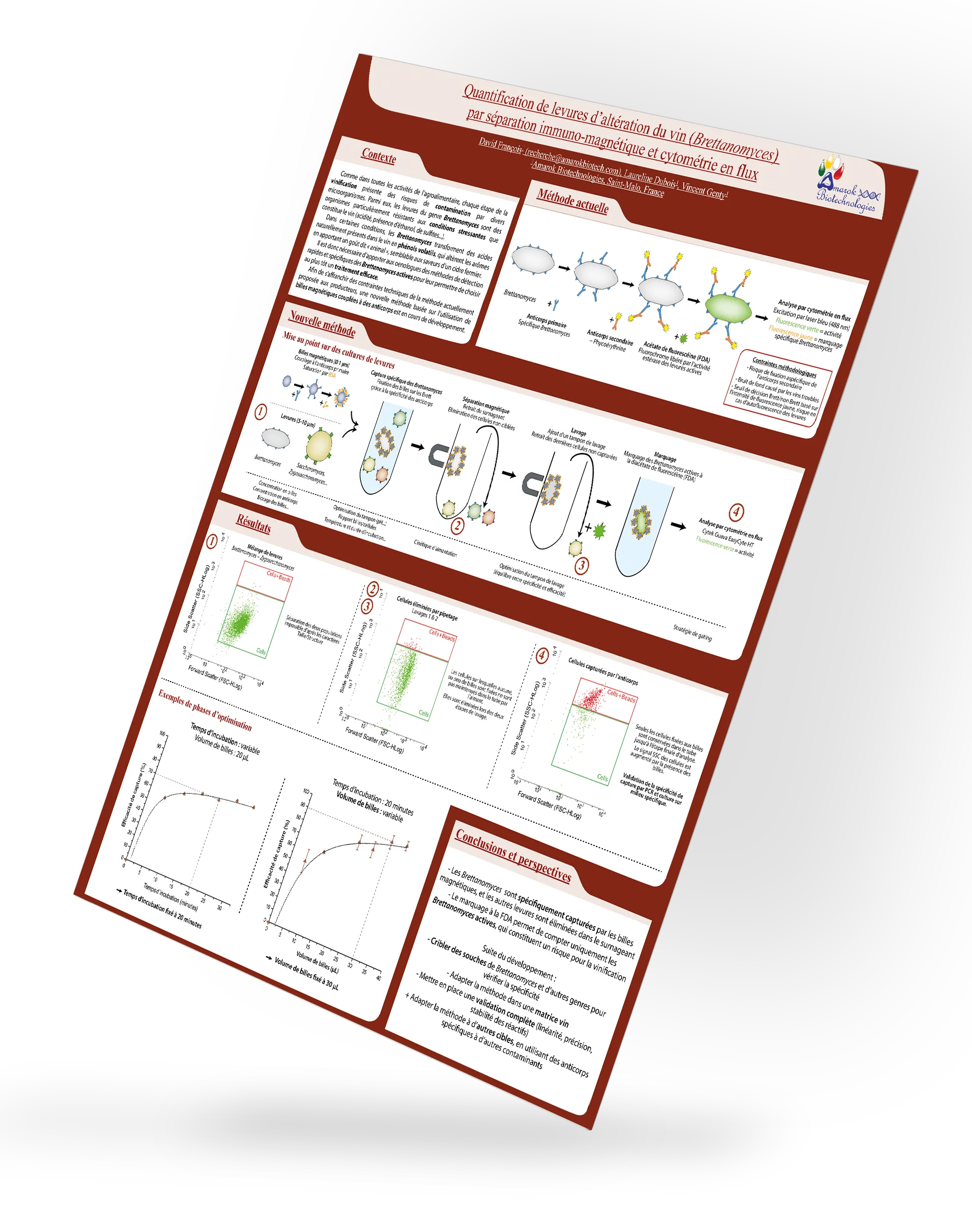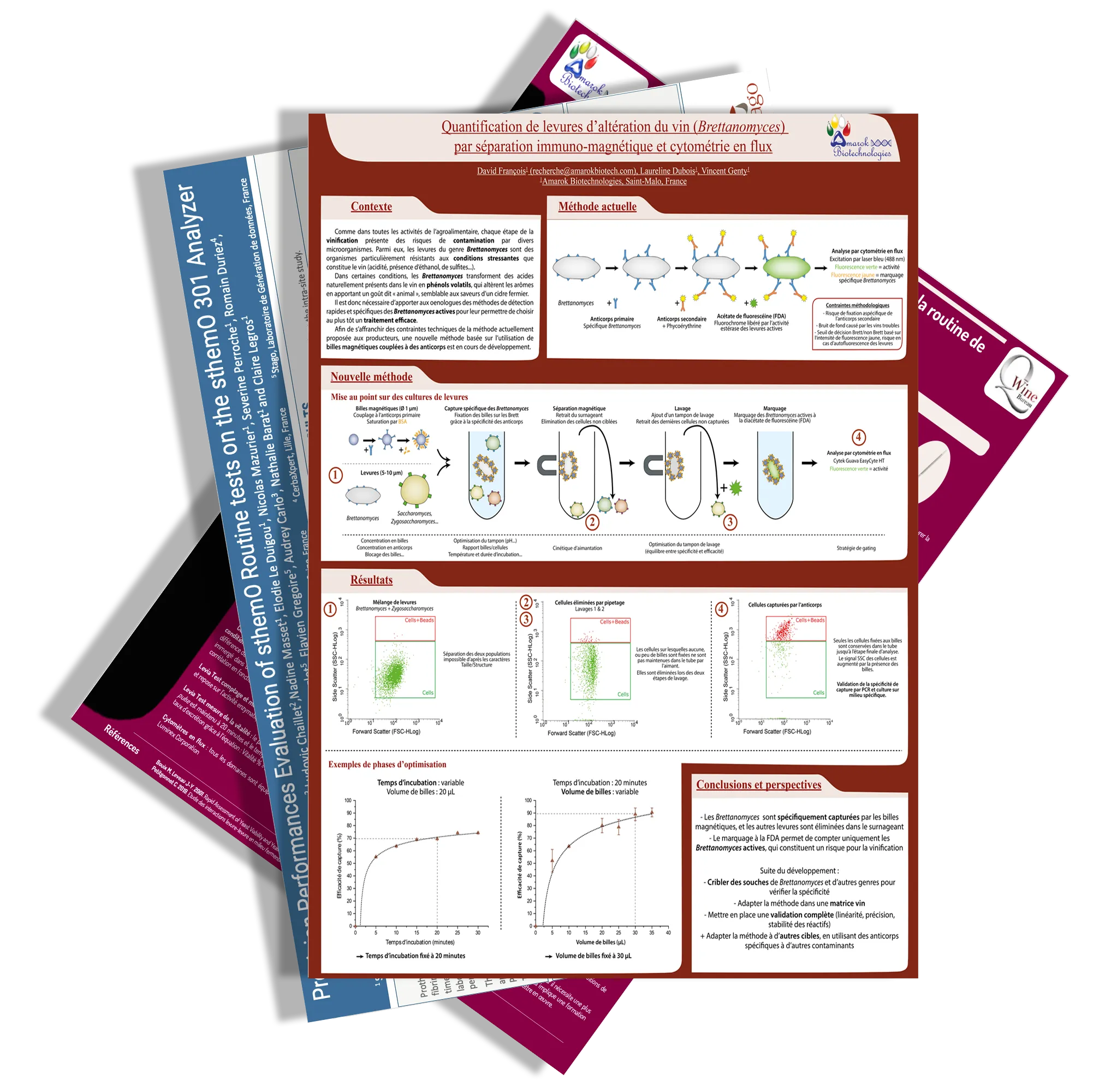Posters

Performance evaluation of the thrombophilia hemostasis test panel on the sthemO 301 analyzer
Thrombophilia is a predisposition — congenital or acquired — to form blood clots, which carries a risk of thrombosis.
Accueil > Ressources > Posters > Quantification of wine spoilage yeasts, Brettanomyces, by immuno-magnetic separation and flow cytometry
Discover Amarok Biotechnologies' innovation in the fight against wine-altering yeasts, thanks to a quantification method based on magnetic beads.


The risk of Brettanomyces contamination during the winemaking process is an economic threat for producers. Indeed, these yeasts develop easily in wine, producing volatile phenols, responsible for undesirable aromas. The detection of active yeasts is a crucial issue since it can allow early treatment to be implemented in the event of contamination.
Amarok Biotechnologies studied the effectiveness of a detection method under development. It uses an original method based on magnetic beads coupled with antibodies.
The 0.1 µm electromagnetic beads are coupled to specific antibodies which bind to the Bretts and allow their capture. A magnetic separation is then carried out. After marking the active yeasts with the FDA (fluorescein diacetate), the detection is done by flow cytometry.
The beads specifically capture Brett, and fluorescent labeling allows quantification of only viable cells that threaten wine quality.
We anticipate several developments:
Our laboratory is also planning the use of different antibodies to adapt the method to contaminants other than Brettanomyces.





Privacy Policy